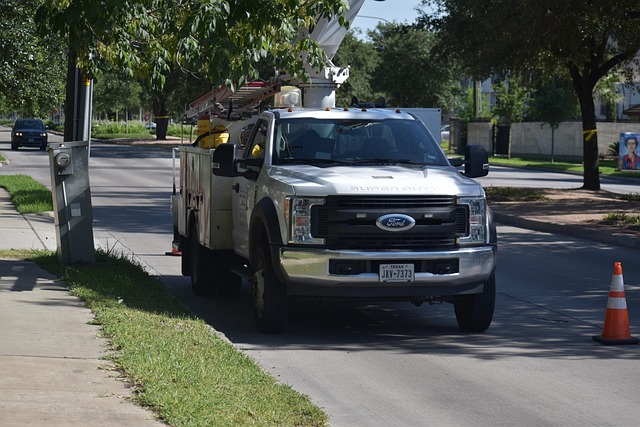“Looking to register your car in California? This comprehensive guide walks you through the entire process, ensuring a smooth experience. From understanding vital registration requirements to gathering essential documents, including how to verify a Vehicle Identification Number (VIN) using trusted tools, this article is your VIN verifier. We’ll also help you navigate California’s vehicle registration classes and complete the application, making it easier than ever to get your vehicle road-ready.”
- Understand California Car Registration Requirements
- Gather Necessary Documents for Vehicle Registration
- How to Verify a Vehicle's VIN (Vehicle Identification Number)
- Choose an Appropriate California Vehicle Registration Class
- Submit Application and Complete Registration Process
Understand California Car Registration Requirements

Before registering your car in California, it’s crucial to understand the state’s specific requirements and processes. One key aspect is ensuring your vehicle has a valid Vehicle Identification Number (VIN) verifier, which plays a vital role in authenticating the car’s identity. This verification process helps protect against fraud and ensures only legitimate vehicles are on California’s roads.
In terms of procedures, you’ll need to complete a registration application, provide proof of insurance, and pass an emissions test if applicable. Additionally, a mobile VIN inspection or mobile vin verification service might be required for certain vehicle types, ensuring convenience while adhering to California’s stringent car registration standards.
Gather Necessary Documents for Vehicle Registration

Before you start the registration process, make sure you have all the required documents. One crucial piece is the Vehicle Identification Number (VIN), which serves as a unique identifier for your car. You can easily verify this number using a mobile VIN verifier or by checking the vehicle’s certificate of sale or purchase agreement. Additionally, gather important paperwork such as proof of insurance, a valid driver’s license, and registration fees.
For a seamless registration experience in California, consider conducting a mobile VIN inspection to ensure your car meets all safety and emission standards. This step is essential, as it allows you to address any issues before proceeding with the registration. With these documents ready, you’re well on your way to completing the registration process efficiently.
How to Verify a Vehicle's VIN (Vehicle Identification Number)

Verifying a Vehicle’s VIN (Vehicle Identification Number) is a crucial step in the car registration process in California. The VIN acts as a unique identifier for your vehicle, ensuring that all records are accurate and preventing fraud. To start, you can check the VIN on the vehicle’s certification label, usually located on the driver’s side door frame or the engine compartment. This initial verification is a simple visual inspection.
For more thorough and convenient mobile vin verification, there are several reliable apps available that provide digital vin inspection. These tools allow you to input your VIN through an app or a website, offering instant data validation. Alternatively, professional mobile vin verifiers can also be hired to cross-check the vehicle’s information, providing peace of mind during the registration process.
Choose an Appropriate California Vehicle Registration Class

Choosing the right California vehicle registration class is essential for a seamless registration process. The state categorizes vehicles into several classes based on factors like weight, type, and intended use. As a first step, ensure your vehicle meets the basic requirements for registration by checking with the California Department of Motor Vehicles (DMV). One crucial aspect to consider is the Vehicle Identification Number (VIN) verification. A reliable VIN verifier, whether it’s a mobile vin inspection or a digital tool, can help you cross-check the vehicle’s history and ensure it complies with DMV standards.
If your vehicle falls into specialty categories like classic cars, motorhomes, or off-road vehicles, specific registration classes are available. These classes often have unique requirements and fees. Utilizing a mobile vin verifier can be beneficial in these cases as it provides on-the-go access to vehicle data, making the registration process more efficient, especially for out-of-state transfers or specialized vehicle types.
Submit Application and Complete Registration Process

After gathering all the necessary documents, it’s time to submit your application and complete the registration process. The first step involves filling out a Vehicle Registration Application form, which can be obtained online or from any California Department of Motor Vehicles (DMV) office. Ensure that all information is accurate and matches the details provided by the vehicle manufacturer. This includes the Vehicle Identification Number (VIN), which serves as a unique identifier for your car and is crucial for accurate vin inspection and verification.
Once your application is complete, you’ll need to provide proof of insurance, pay the registration fees, and pass a mobile vin verifier or conduct a traditional VIN inspection at a certified location. A mobile vin verification service can be particularly convenient, allowing you to complete these steps from the comfort of your home or workplace. Alternatively, you can visit a DMV field office for an in-person inspection. After successfully completing these requirements, you’ll receive your vehicle’s registration certificate and license plates, officially registering your car in California.
Registering your car in California involves understanding specific requirements, gathering essential documents, and correctly identifying your vehicle’s VIN. By following these steps and choosing the right registration class, you can seamlessly complete the process. Remember to utilize a reliable VIN verifier for accurate information. In California, efficient vehicle registration ensures legal compliance and convenient access to road services.
